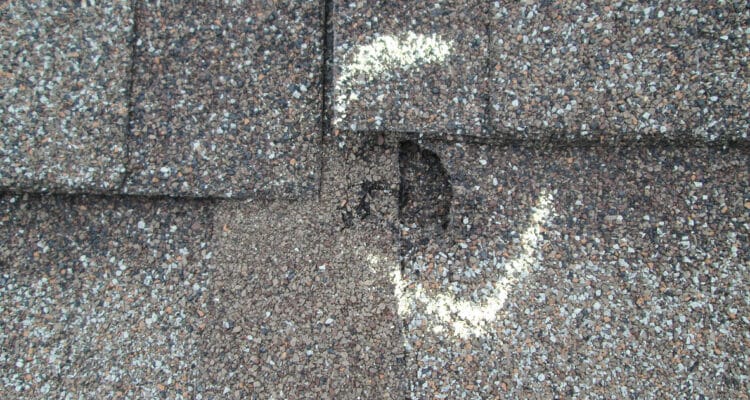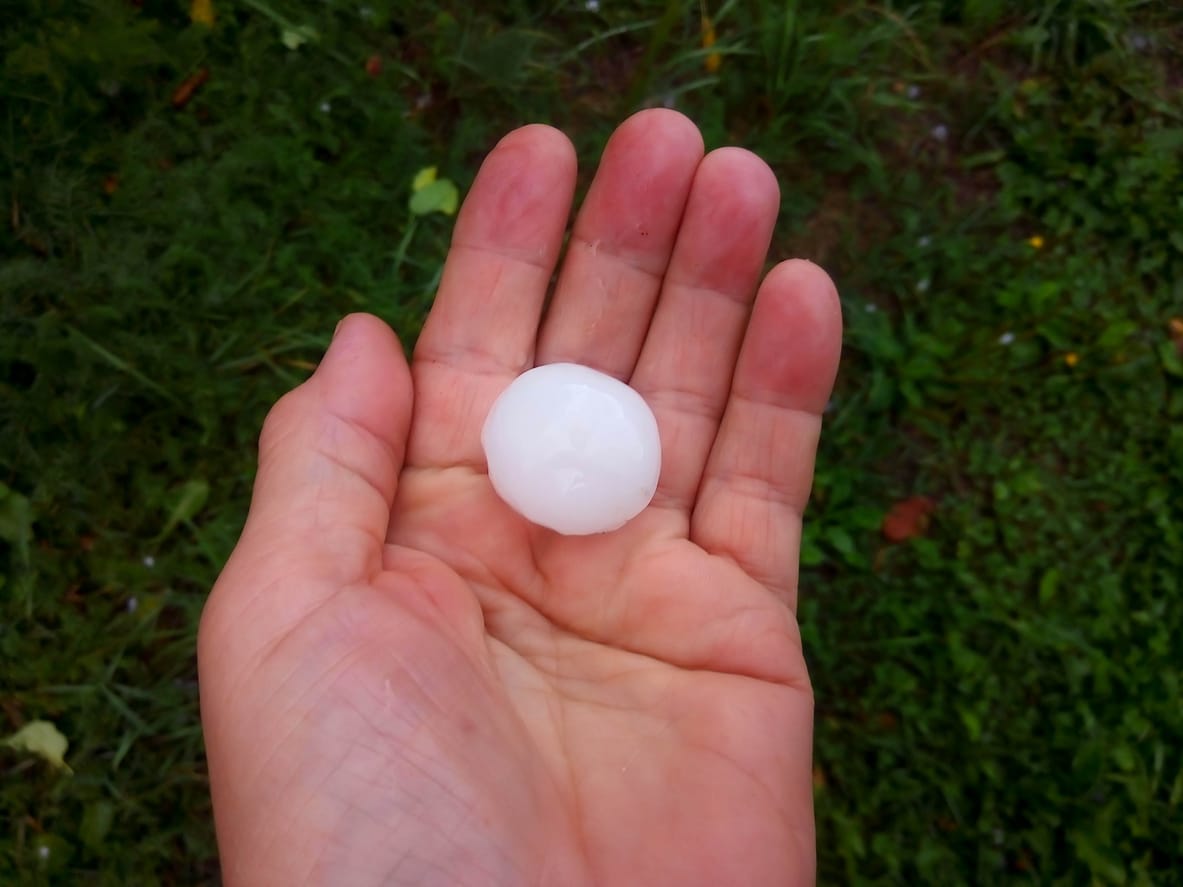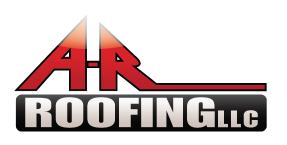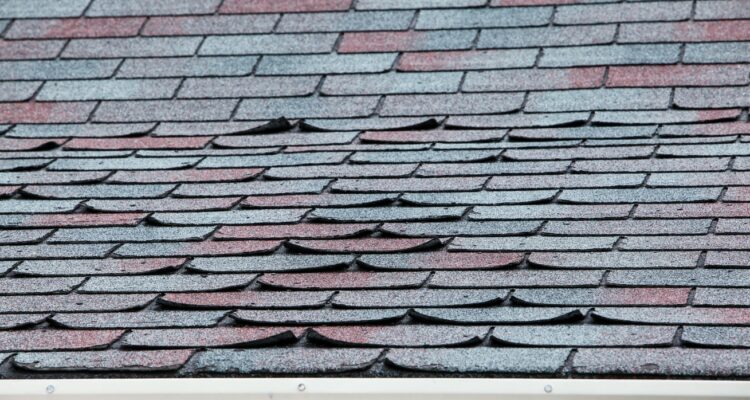Wind damage roof claims rank among the leading reasons property owners file claims with insurance…

How Big Does Hail Need to Be to Damage a Roof? Understand the Impact
Hail remains the leading reason for a roof insurance claim for roof repair in the U.S. Wind and hail damaged structures rank as a top reason for property and roof damage claims and hiring a roofing contractor.
Data from the National Oceanic and Atmospheric Administration indicates more property owners could be filing a claim with their insurance company going forward. The number of storms with severe hail impacts rose from 5,879 in 2022 to 6,962 in 2023.
Despite hail being the leading cause of insurance claims, residential and commercial property owners are often surprised to learn what size hail damages roof and siding materials. Truth be told, a combination of intense wind speed and hard impacts can result in a hail damaged roof.
What Size Hail Damages Roof Shingles?
It’s important to keep in mind that any size of hail can damage your roof, windows or siding. A golf ball-sized hailstone can make impact at over 40 mph. Imagine throwing a stone nearly 2 inches in diameter at the side of your home or commercial building. Without a doubt, it will leave an indentation. The same holds true of hard hail ice when hundreds land on asphalt shingles or metal roofing materials. Basically, any size of hail can result in roof damage.
.

How Fast Does Hail Strike Homes and Commercial Buildings?
There are two factors to consider when estimating how fast the hard ice was traveling when it made an impact. Wind speed has a significant influence on whether a property is negatively affected. Hail adheres to the law of gravity and would otherwise fall in a relatively straight line. However, high winds and powerful gusts cause hail to slam sideways at high speeds, resulting in hail damage.
In the absence of strong winds, speed is a byproduct of hail size. A 1-inch chunk of hail generally reaches between 25 and 40 mph. Up the ante to a hailstone 4 inches in diameter, and you can expect hail impacts at speeds of up to 72 mph. When a hailstone exceeds 4 inches, hail damage to your roof is a forgone conclusion.
At 4 inches, the hard ice is usually moving at 100 mph.
These are ways meteorologists typically refer to the size of hail in reports:
- Pea: Up to 1/4 inch diameter
- Mothball: Up to 1/2 inch diameter
- Penny: Up to 3/4 inch diameter
- Nickel: Approximately 7/8 inch
- Quarter: Measuring 1 inch in diameter. This size and larger is considered severe.
- Ping-Pong Ball: About 1 1/2 inch
- Golf Ball: Measuring 1 3/4 inches.
- Tennis Ball: Upwards of 2 1/2 inches, tennis ball size hail usually cracks automobile windshields.
- Baseball: At 2 3/4 inches, property owners can expect extreme damage on your roof.
- Tea Cup: Hailstones of 3 inches or larger.
- Softball: These 4-inch hailstones pose a significant threat to buildings and human safety.
- Grapefruit: When 4 ½-inch ice stones fall to Earth, they can be traveling at more than 100 mph.
Telltale Signs of Hail Damage
When large and fast-moving hailstones strike a roof, it can be relatively easy to see signs of hail damage to your roof. But a roof professional typically sees issues that someone outside the construction trades might overlook. These are things a trained eye can identify during a roof inspection.
- Granule Loss: Asphalt shingles have an outer layer of granules that are similar to sandpaper. Although you might not notice granule loss at first blush, the tiny particles will show up in your gutters.
- Cracked Shingles or Tiles: Hard hail strikes can subtly split asphalt shingles and a professional will find them when conducting a roof inspection. Hail can also cause cracks in roofing materials such as slate, clay, wood, or cement. Even tiny cracks can lead to leaks and extensive damage.
- Flat Roof Damage: Flat commercial roofs are susceptible to hail damage, just like their residential counterparts. Hail strikes can sever the outer rubber roof layer and allow moisture to penetrate the insulation and infrastructure.
- Roof Vents: Exhaust vents are usually sturdy enough to withstand hail. However, the flashing and caulking around roof vents can be negatively affected. Chips, dents, and cracks lead to leaks.
How Do Hail Storms Occur?
If it weren’t for the high number of hail storms, meteorologists might consider them something of an anomaly. That’s because for ice balls to form in the sky, especially on seemingly warm days that hail tends to happen, an unusual series of events need to transpire.
First, ordinary raindrops are pushed to heights by updrafts. The liquid H2O then freezes at extreme cold elevations. The size of hail is then determined by the amount of contact the frozen droplets have with nearby water in the clouds.
Once it grows too heavy to remain in the clouds, it falls to Earth. The more contact ice has with water in cold pockets of the sky, the larger the size of hail striking rooftops, automobiles, and siding.
Roof Shingle Ratings and Hail Damage Prevention
Roof shingles have a rating system based on tests where steel balls are dropped to simulate hail. The class ratings for hail damage range from Class 1 to Class 4, with Class 4 offering the highest impact resistance. Higher-rated shingles provide better protection and can lead to increased durability and lower insurance premiums.
At AR Roofing, we strive to provide the highest quality service and guarantee our work by using only top-tier materials from nationally respected manufacturers. All our crews receive extensive training to expertly recommend and install these materials on both residential and commercial properties.
Schedule a Hail Damage Roof Inspection in Wichita, KS
We bring more than 25 years of experience to every residential or commercial roofing project. We provide price-friendly solutions for community members who need roof repairs, maintenance, and replacements. If you have an aging roof or suspect hail strike damage, contact us today and schedule a roof inspection.


